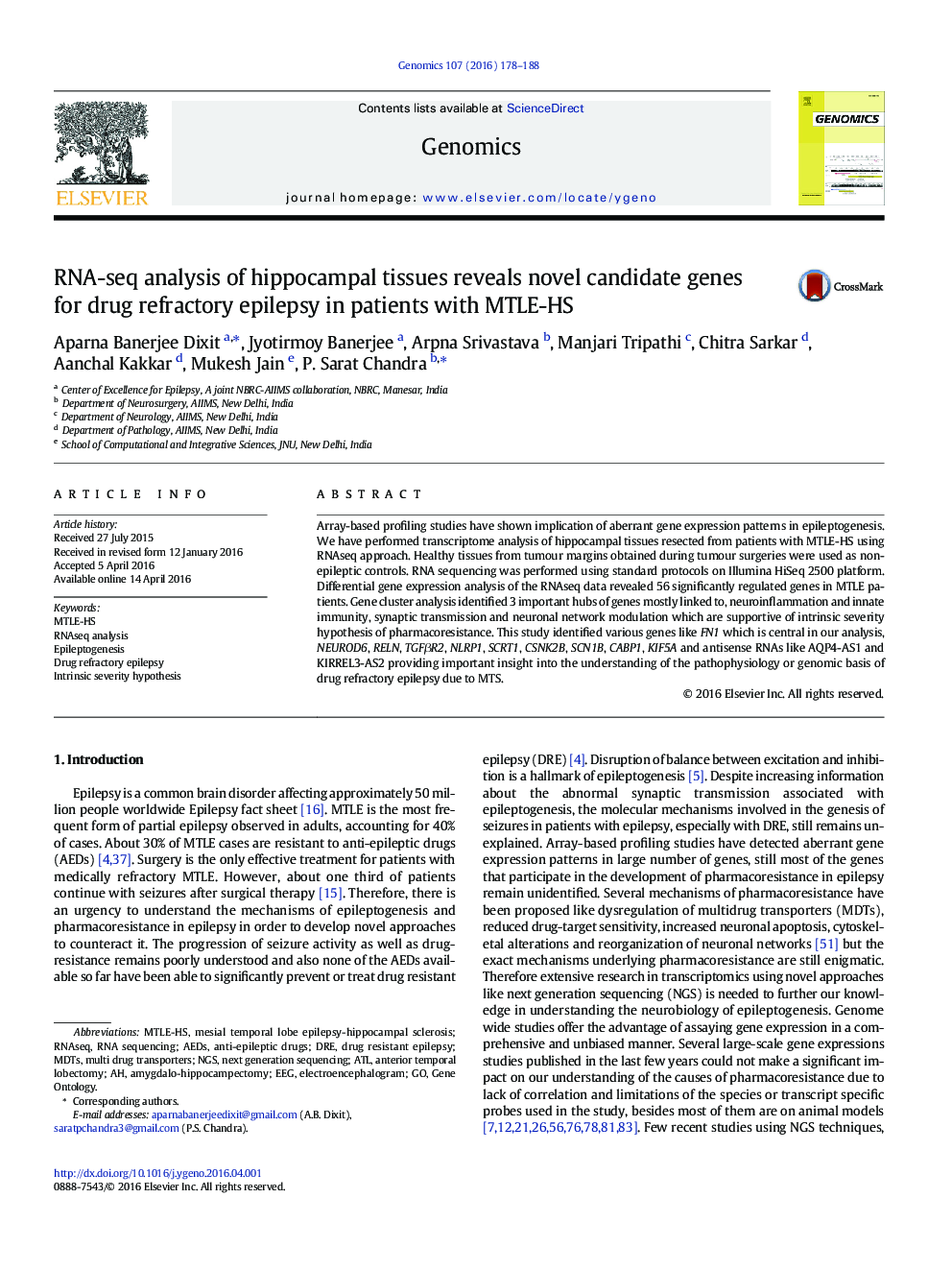| Article ID | Journal | Published Year | Pages | File Type |
|---|---|---|---|---|
| 2820530 | Genomics | 2016 | 11 Pages |
•RNAseq analysis of hippocampal tissue from MTLE patients revealed potential molecules that may play crucial role in the pathogenesis of MTLE.•FN1 is central in our network analysis and demands further validation in serum and CSF samples for its potential as biomarker.•Three major hubs identified include molecules involved in modulation of neuronal networks, synaptic transmission, and neuroinflammation.•These hubs support the intrinsic severity hypothesis of pharmacoresistance.
Array-based profiling studies have shown implication of aberrant gene expression patterns in epileptogenesis. We have performed transcriptome analysis of hippocampal tissues resected from patients with MTLE-HS using RNAseq approach. Healthy tissues from tumour margins obtained during tumour surgeries were used as non-epileptic controls. RNA sequencing was performed using standard protocols on Illumina HiSeq 2500 platform. Differential gene expression analysis of the RNAseq data revealed 56 significantly regulated genes in MTLE patients. Gene cluster analysis identified 3 important hubs of genes mostly linked to, neuroinflammation and innate immunity, synaptic transmission and neuronal network modulation which are supportive of intrinsic severity hypothesis of pharmacoresistance. This study identified various genes like FN1 which is central in our analysis, NEUROD6, RELN, TGFβR2, NLRP1, SCRT1, CSNK2B, SCN1B, CABP1, KIF5A and antisense RNAs like AQP4-AS1 and KIRREL3-AS2 providing important insight into the understanding of the pathophysiology or genomic basis of drug refractory epilepsy due to MTS.
